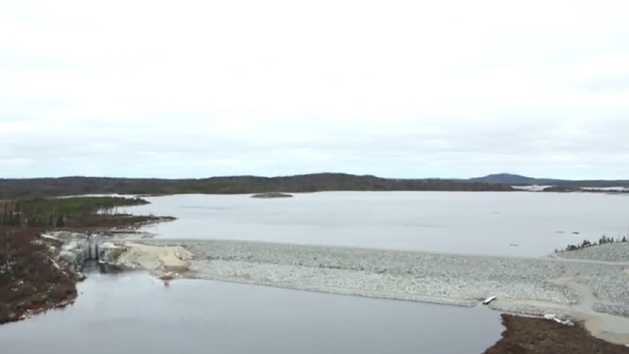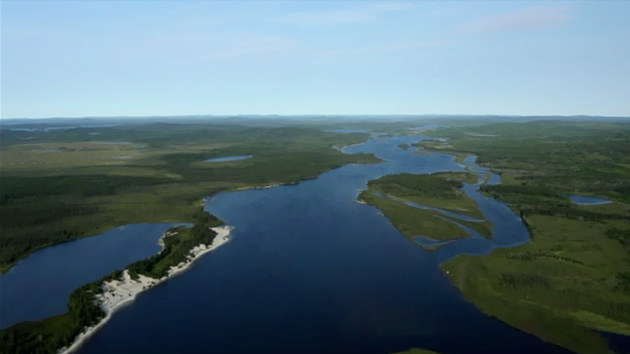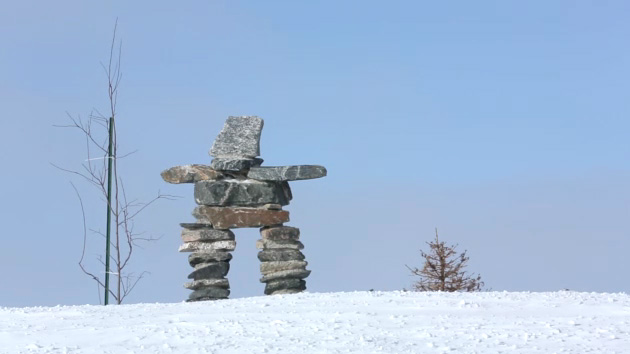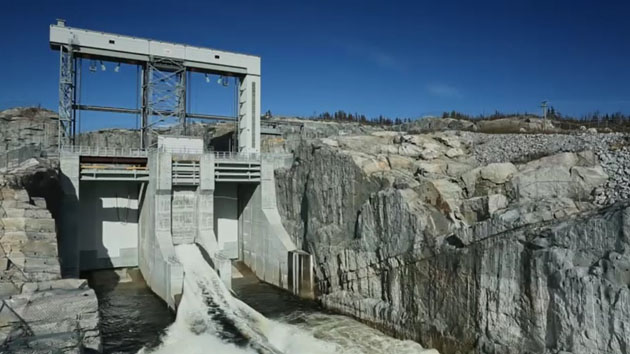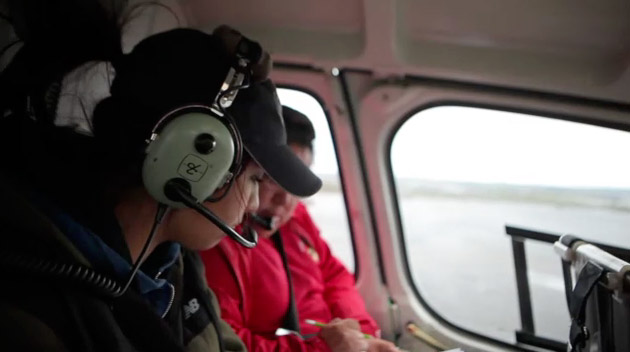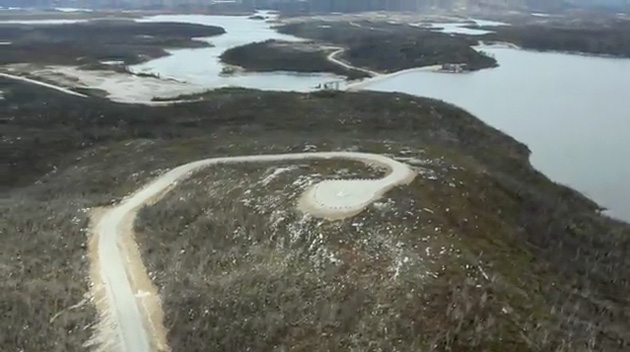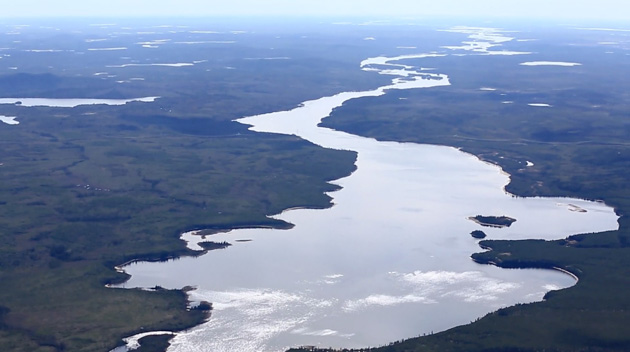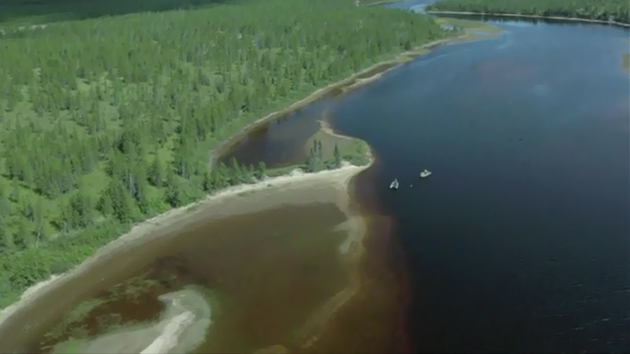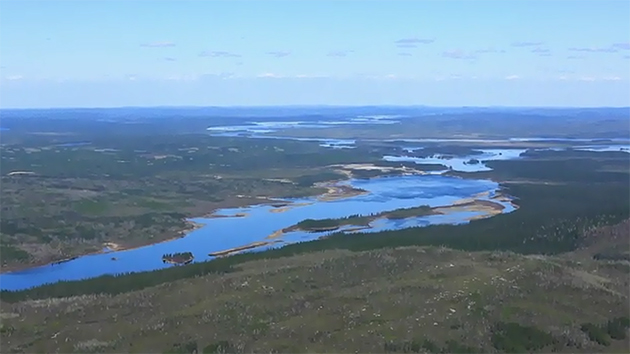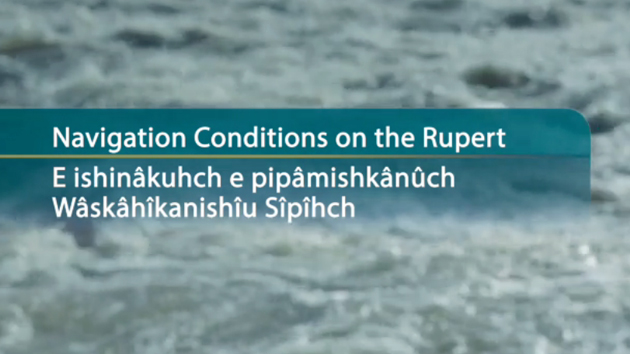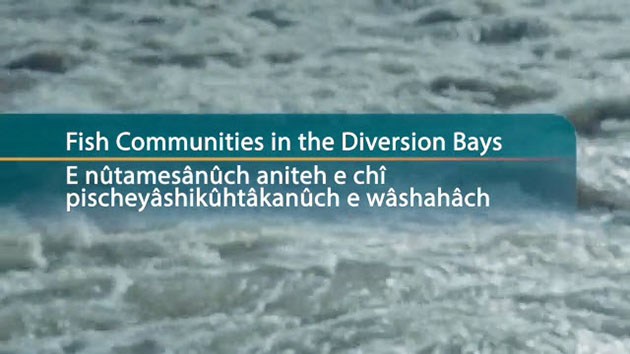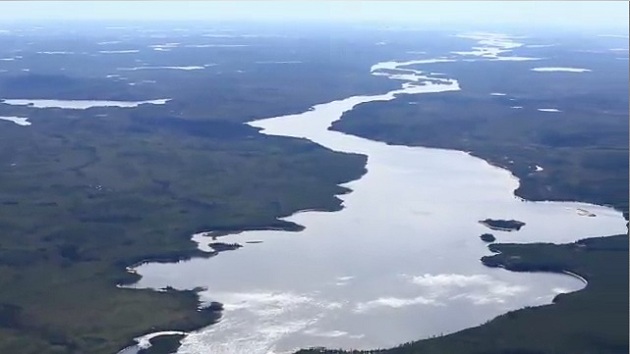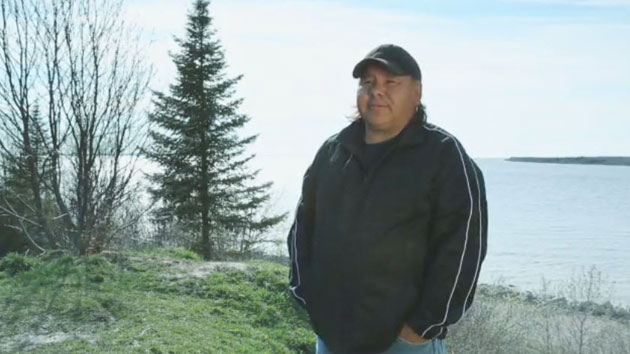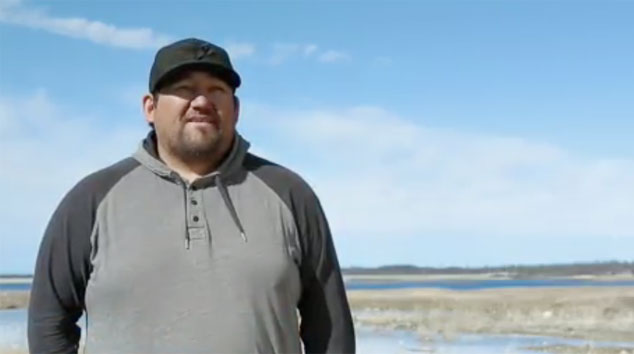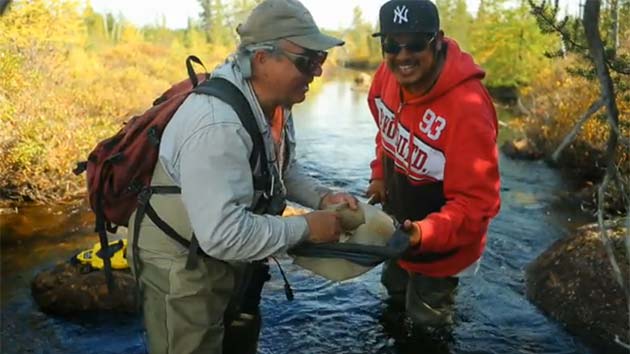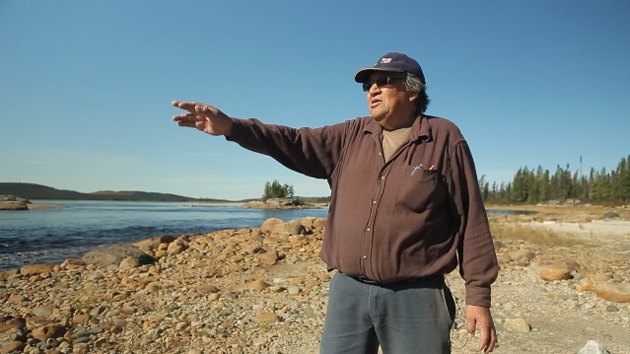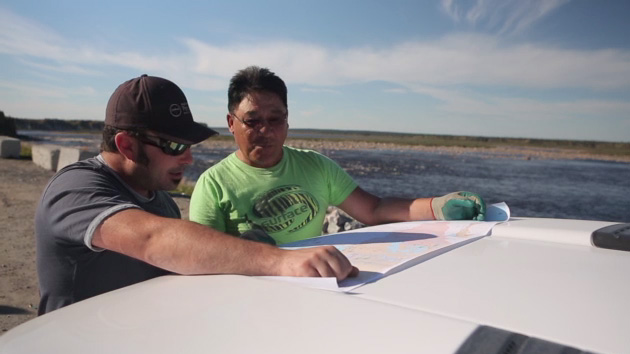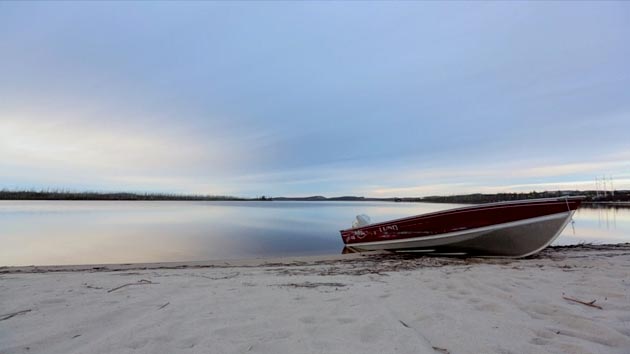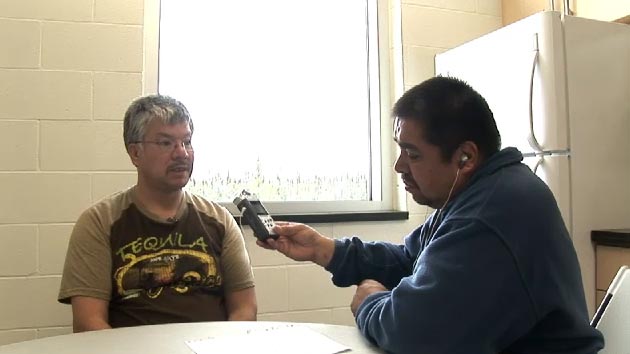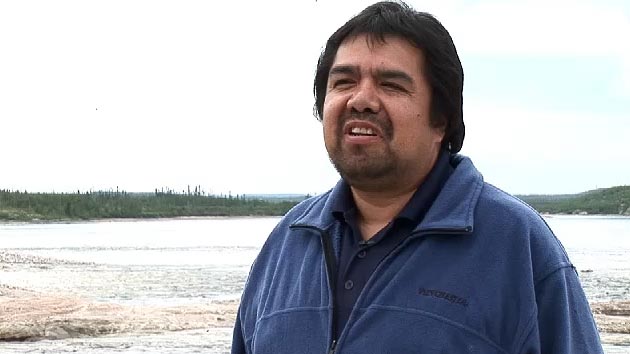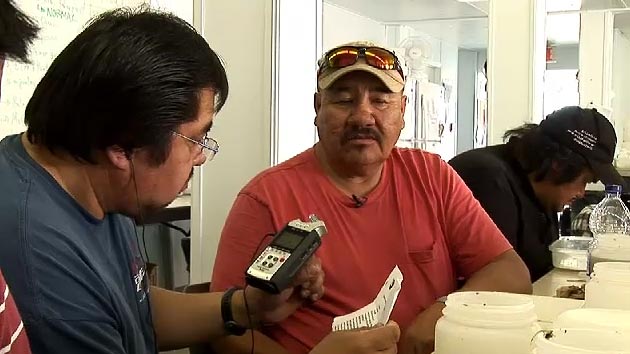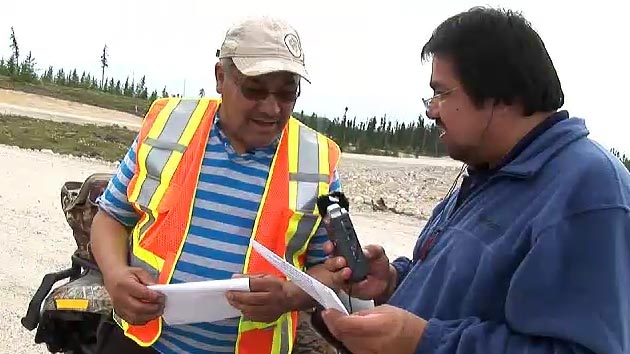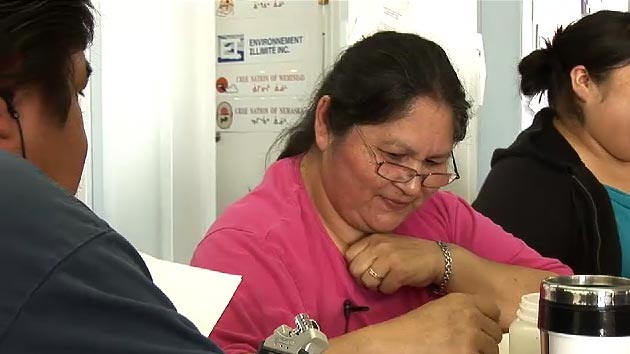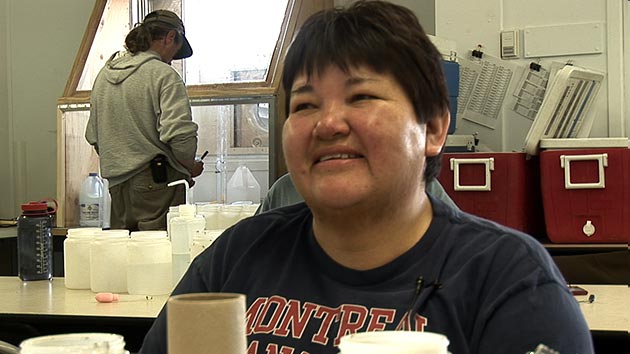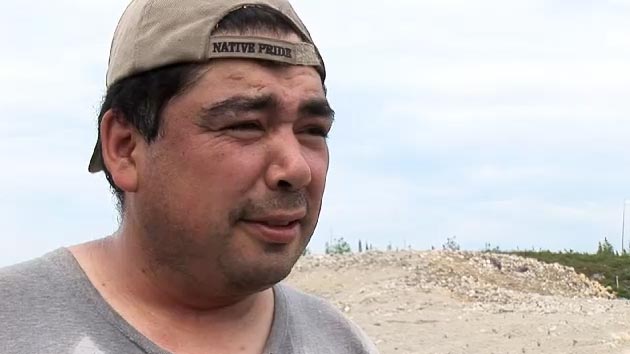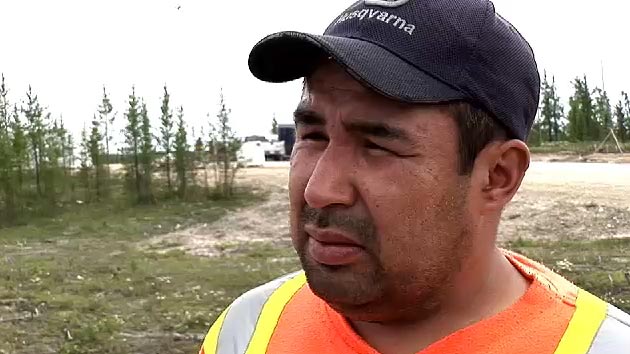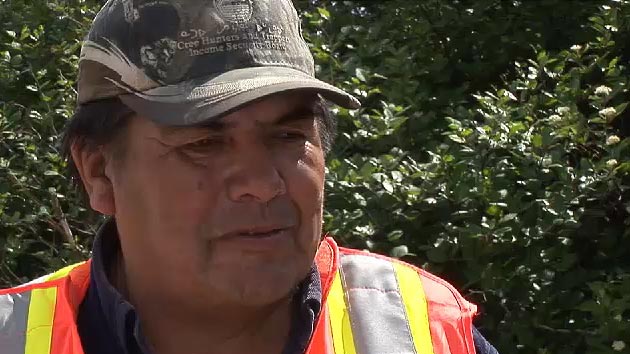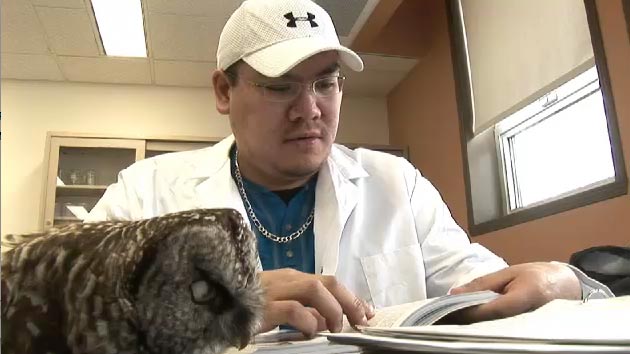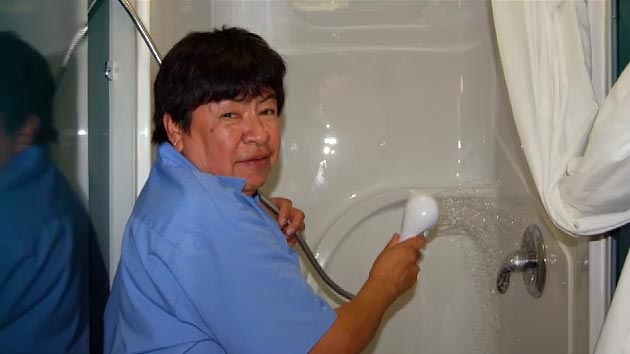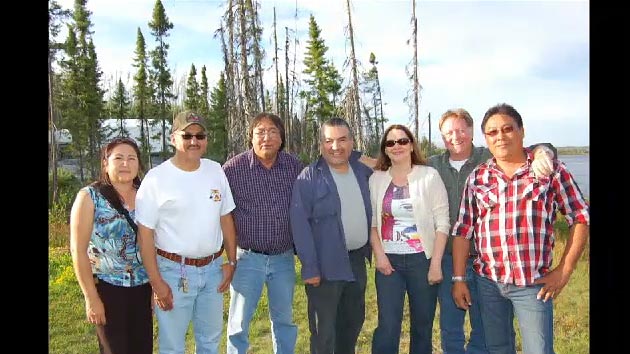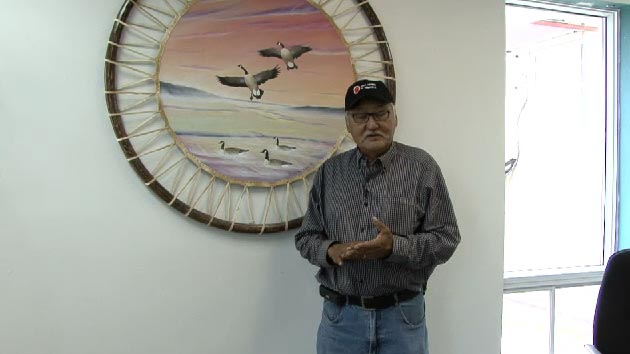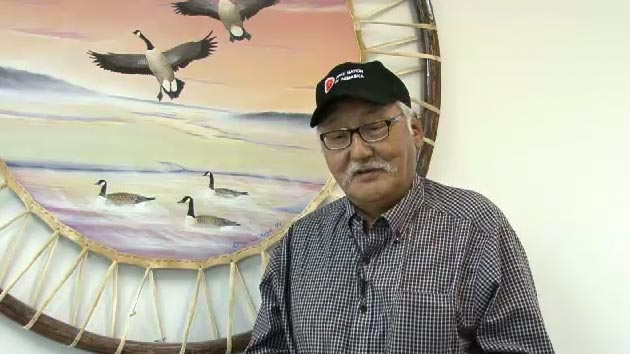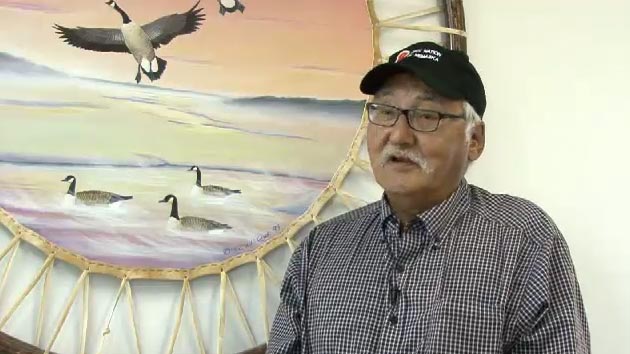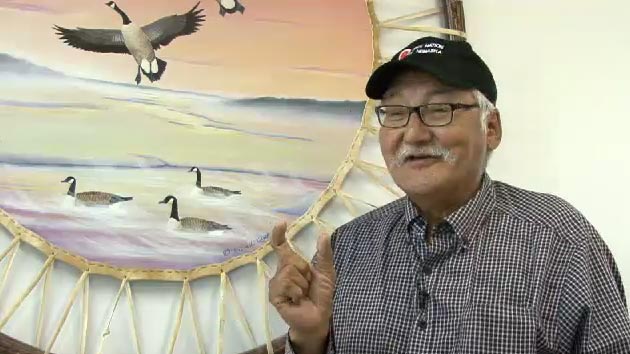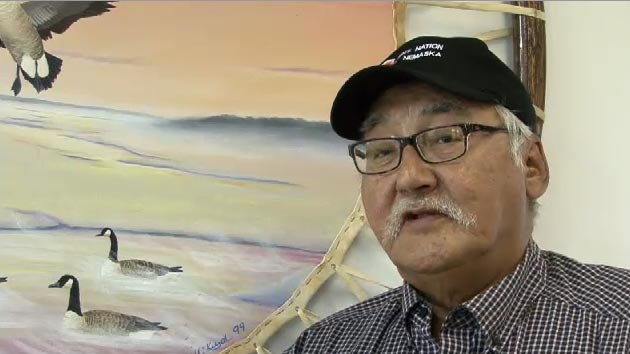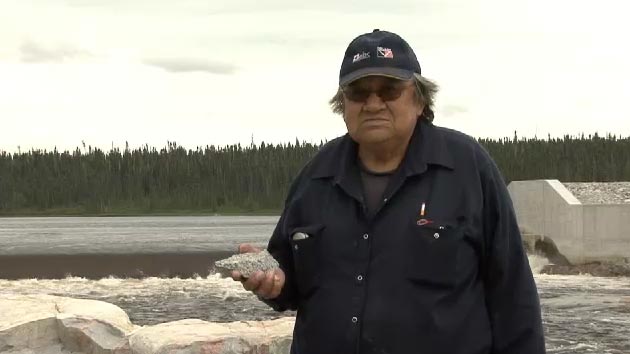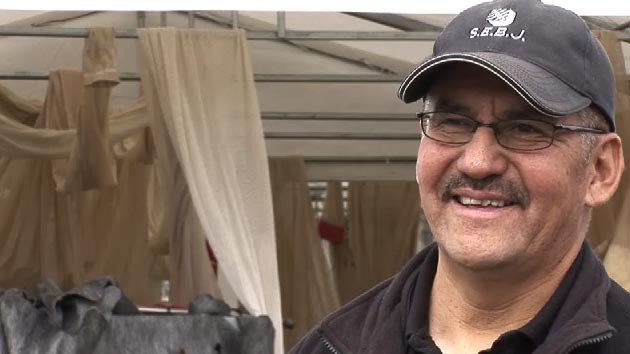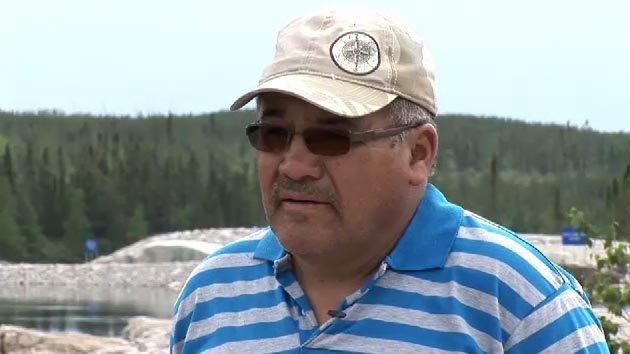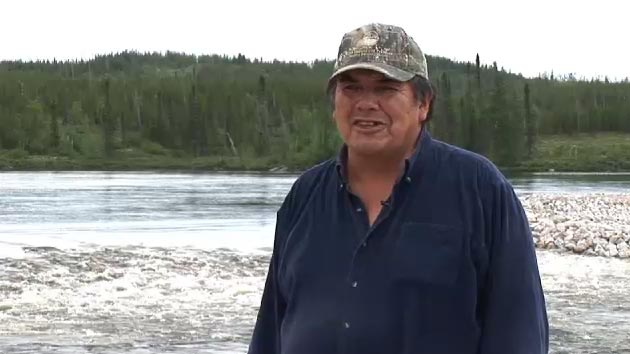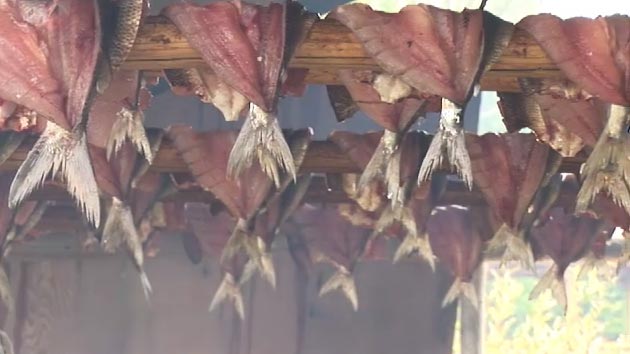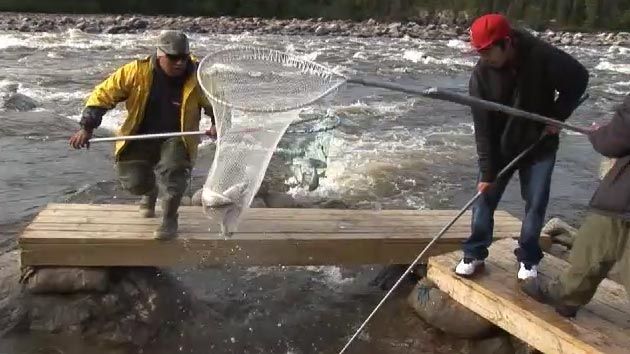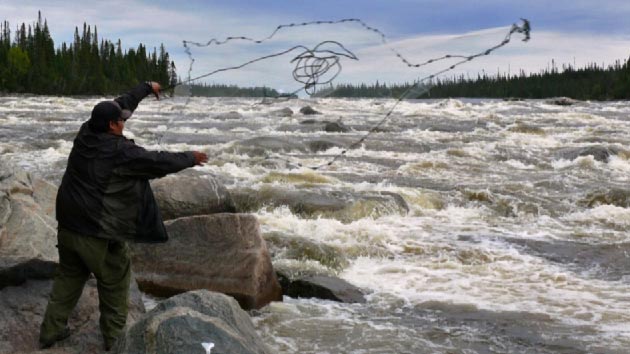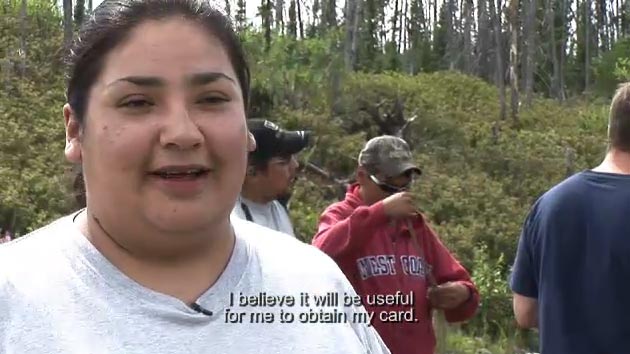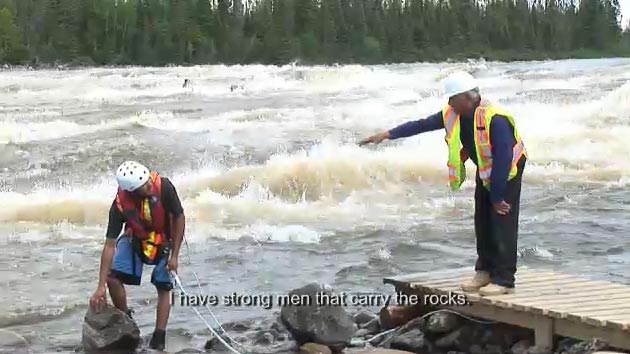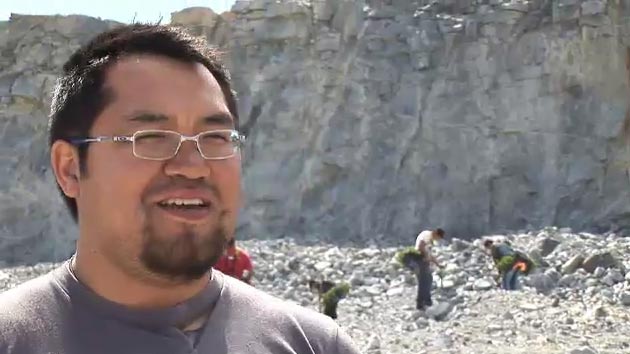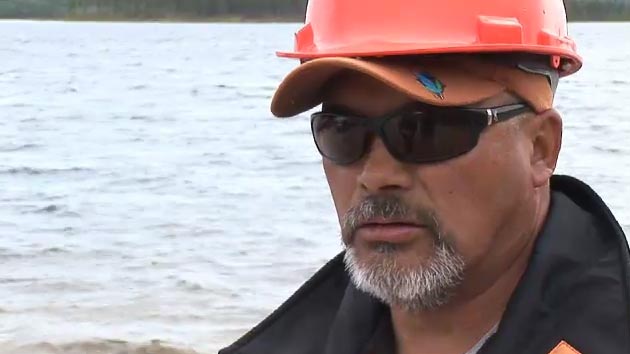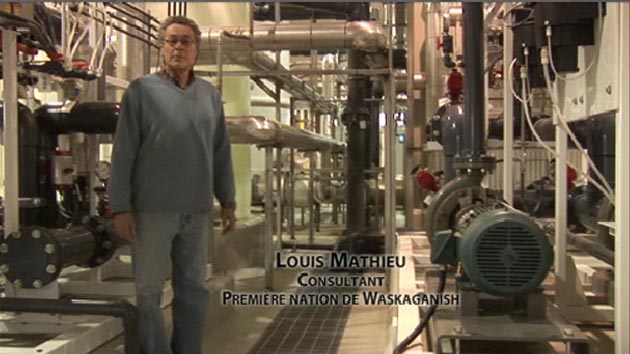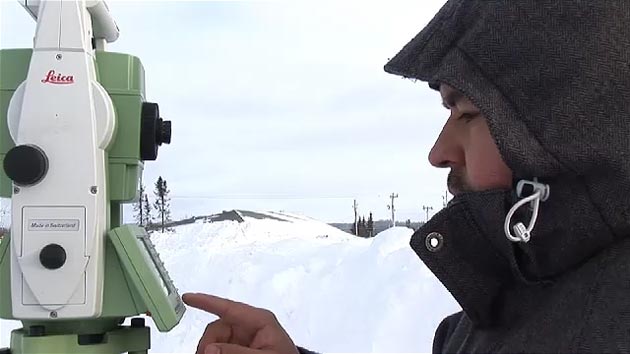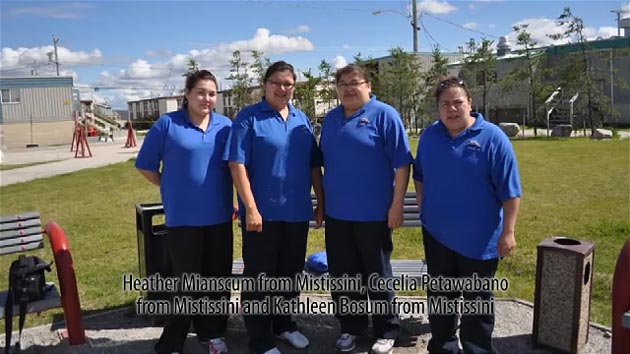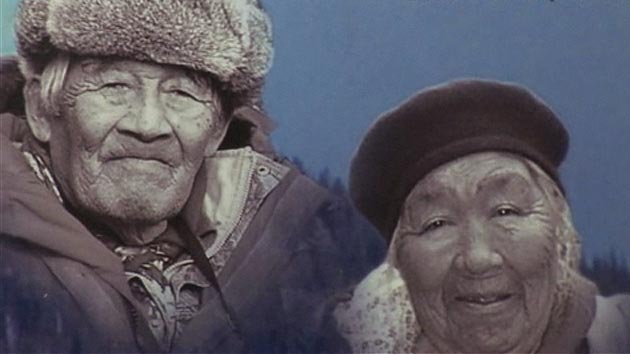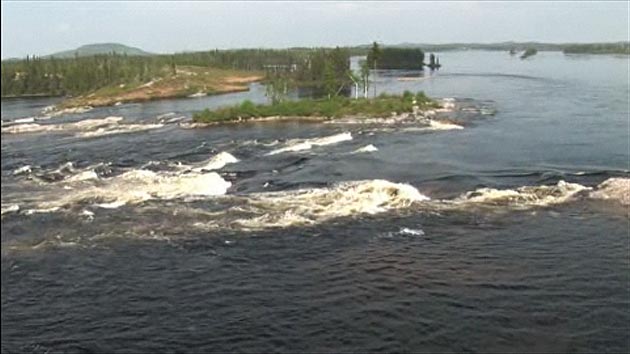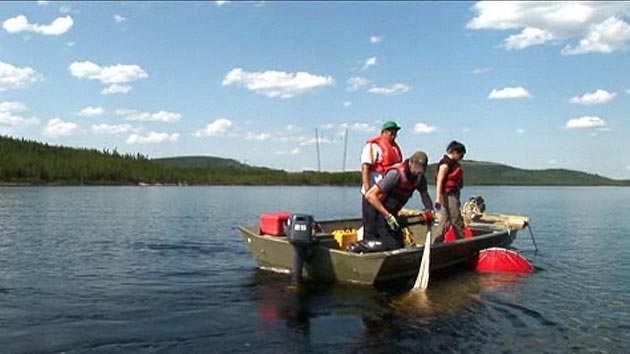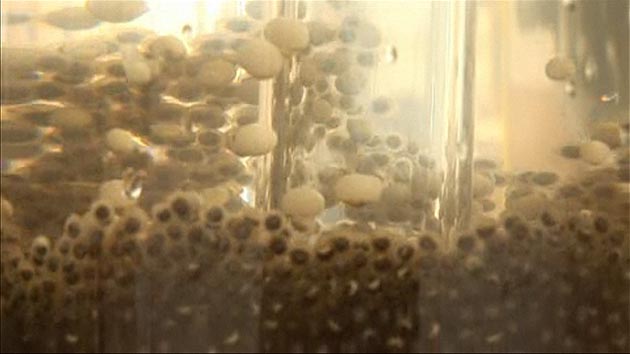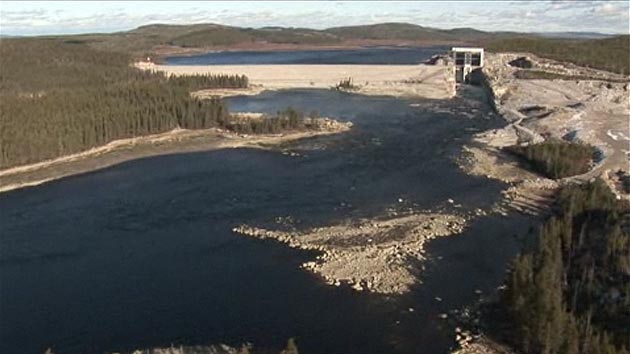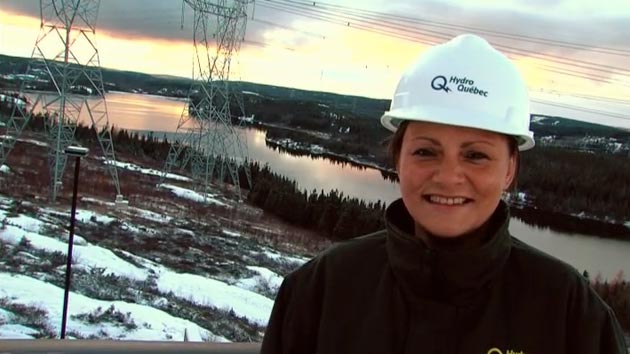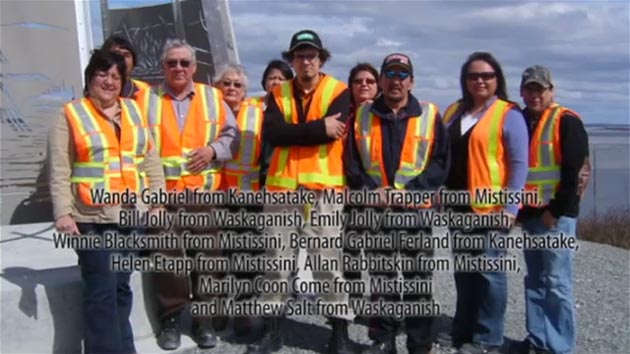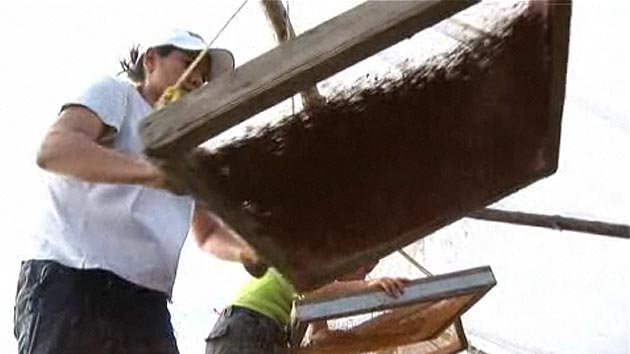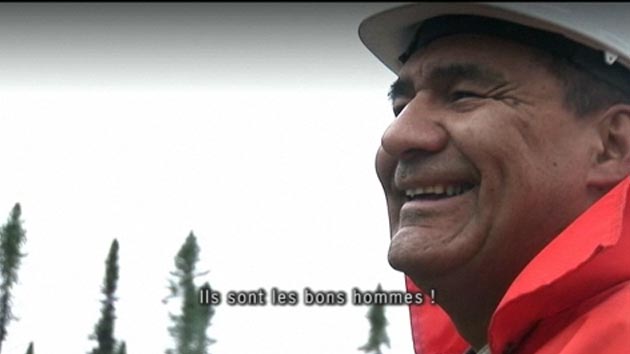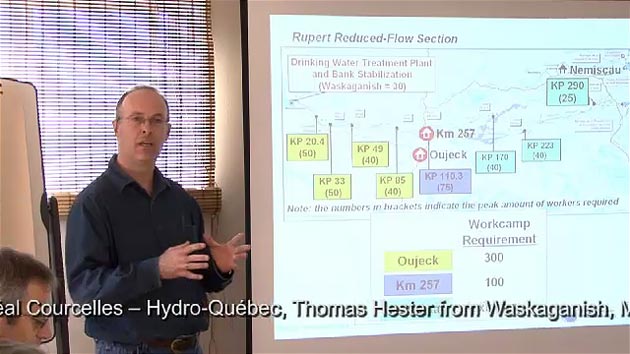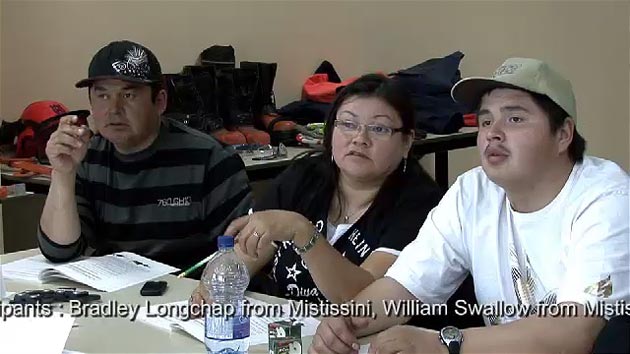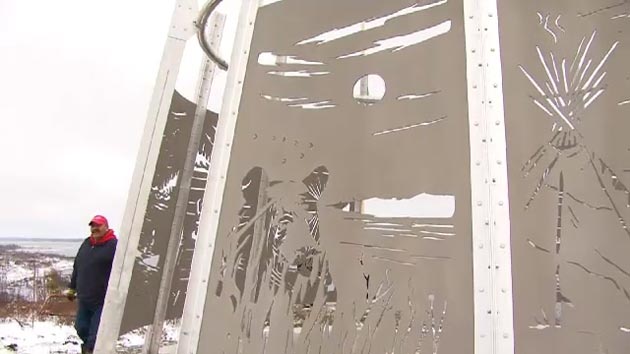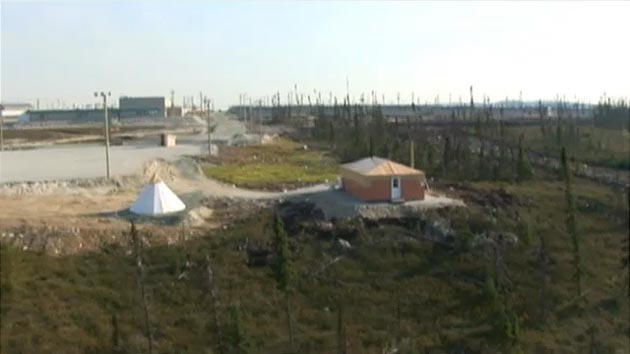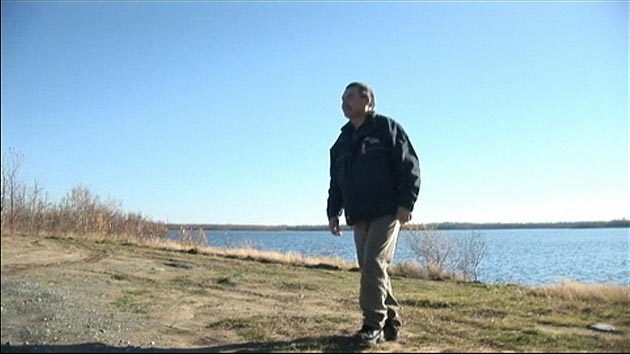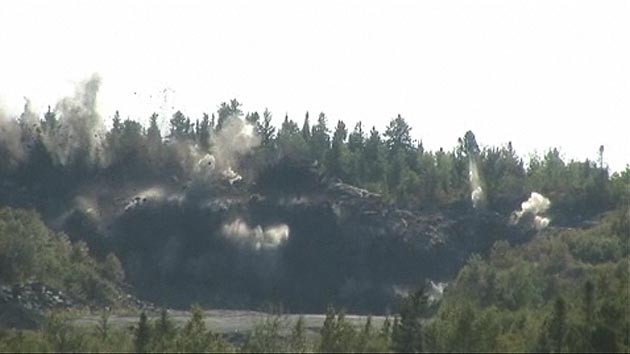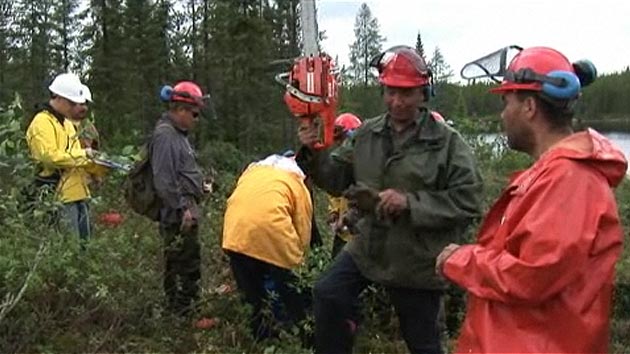Chisasibi, Eastmain, Mistissini, Nemaska, Oujé-Bougoumou, Waskaganish, Waswanipi, Wemindji, Whapmagoostui
September 21, 2020
La-Grande-1 and Robert-Bourassa Hydropower Facilities
Dam inspection Daily monitoring
Follow with us a typical day of the teams in charge of surveillance, inspection and maintenance of the Complex La Grande dams.
-
September 21, 2020
Teaming up for Safety
Chisasibi and Hydro-Québec work together to ensure the safety of the population.
-
-
March 30, 2018
Assessing the limits of saltwater intrusion in Rupert Bay
In the Rupert estuary and bay, a team studies the water levels and the limits of saltwater intrusion to see if the changes brought about by the partial Rupert diversion are having an impact on the location of the freshwater-saltwater interface.
-
January 1, 2017
Celebrating the 100th Meeting of the Cree–Hydro-Québec Monitoring Committee
The Cree–Hydro-Québec monitoring committee is an important forum for addressing environmental issues. The 100th meeting of the committee took place in the community of Mistissini. To mark this milestone and celebrate the work accomplished to date, a feast was held with the tallymen and their families.
-
-
October 1, 2017
Longnose sucker, an important indicator
In the estuary and mouth of the Rupert, a team assesses the impact on small wildlife of the decrease in organic carbon input following the partial diversion of the Rupert. Based on catches from net fishing, the team studies the growth and diet of the longnose sucker, which feeds mainly on invertebrates living at the bottom of the river.
-
September 1, 2017
Studying the Rupert's Banks
In the reduced-flow stretches of the Rupert River, a team conducts ground surveys and helicopter flyovers to assess the appearance of the banks and monitor changes. The data collected is used to complete the follow-up of riverbank dynamics and to update riverbank maps.
-
August 1, 2017
Monitoring the changing landscape along the Rupert
Along the Rupert, a team assesses how the reduced flow affects the landscape. They analyze landscape components and the visual impact of hydraulic structures and the seeding of the banks. They also study what Crees and visitors think of the landscape.
-
July 3, 2017
Monitoring changes in riparian and aquatic vegetation
In the area of the Rupert River and Rupert diversion bays, a team monitors changes in riparian and aquatic vegetation. They survey the plant communities along a transect to determine its profile. The same transects are surveyed over several years to assess the changes in vegetation.
-
June 8, 2017
Navigation conditions in the Rupert diversion bays
To assess navigation conditions in the Rupert diversion bays, a team conducts helicopter flyovers and travels on the river, identifying constraints in the navigation corridors. A map is then produced to support the navigation activities of the Crees.
-
April 13, 2017
Describing fish communities in the Eastmain River
At the foot of the generating stations on the Eastmain river, a team studies fish communities following the changes to the aquatic environment that resulted from the commissioning of Eastmain-1-A generating station. Using net fishing and laboratory measurements and sampling, the team assesses fishing yields and describes the characteristics of fish communities.
-
March 23, 2017
Observing the short-eared owl, great grey owl, Bonaparte's gull and birds of prey
Using aerial and ground transects for observation, a survey team conducts a follow-up on birds of prey, short-eared owl, great grey owl and Bonaparte's gull by identifying the breeding pairs or nests in the area of the diversion bays and the reduced-flow stretch of the Rupert.
-
February 23, 2017
Monitoring the water quality of Rupert and Nemiscau rivers
In the Rupert and Nemiscau rivers, downstream of the diversion bays, a team in charge of collecting water samples visits 23 sample stations by helicopter. The samples are then sent to the laboratory for analysis to monitor changes in the color, turbidity and suspended solids in these rivers.
-
February 8, 2017
Inauguration of Upichiwin Belvedere
Upichiwin belvedere was built near La Grande-1 powerhouse in collaboration with the Chisasibi Cultural Centre. This site commemorates the Upichiwin rapids, which used to be an important meeting place and fishing spot for the Cree community in Chisasibi. When the belvedere was inaugurated in fall 2015, five interpretive panels highlighting the rich history of the site were unveiled during the ceremony.
-
January 13th, 2017
Sidney Loon: Backbone of the fieldwork team
To ensure that activities run smoothly, a team is in charge of fieldwork logistics and relations with Cree workers. This team supports consultant teams with their equipment and travel needs and is in charge of recruiting and hiring the Cree workforce. Thanks to his professionalism, commitment, people skills and rigor, Sidney Loon made a huge contribution to the success of this important team.
-
October 28, 2016
Measuring the use of the large spawning ground near Sarcelle powerhouse
Downstream of Sarcelle powerhouse, a team gathers drift material to check on the integrity of the large developed spawning ground. Afterwards, to measure the use of the spawning ground, the eggs and larvae collected will be sorted, counted and identified in a laboratory.
-
September 30, 2016
Marking the end of the cisco follow-up
As part of the Eastmain-Sarcelle-Rupert complex, cisco was monitored for eight years through environmental follow-up activities. A large number of Cree workers from the community of Waskaganish were involved in this work.To mark the end of the cisco follow-up, the community organized a feast to thank the workers and highlight the importance of the work carried out.
-
August 26, 2016
Checking Developed Spawning Ground Use in the Rupert Diversion Bays
In the area of the Rupert diversion bays, five multispecies spawning grounds were developed downstream of the instream flow release structures. To check the physical integrity and use of these spawning grounds, fish eggs and larvae are harvested from the river and taken to the laboratory for sorting and counting.
-
April 28, 2016
Cultural exchanges and workplace integration
To facilitate the integration of new Cree employees, Hydro-Québec has set up a coaching program pairing Cree recruits with seasoned workers. During the annual meeting of the Cree employee integration committee, a cultural activity was held in the community of Chisasibi to teach the program's coaches about Cree culture.
-
March 30, 2016
Monitoring the River's flow
Under the Eastmain-Sarcelle-Rupert Complex, a committee was created to adequately manage the ecological instream flow regime downstream of the Rupert's spillway. Made up of Cree and Hydro-Québec representatives, the Rupert River Water Management Board is responsible for making recommendations to maintain the ecological instream flow, thereby ensuring fish habitat conservation and the continuity of Cree activities on the Rupert.
-
March 9, 2016
Cree–Hydro–Québec Monitoring Committee: Working Together
The Cree–Hydro–Québec Monitoring Committee was created to adequately manage the environmental follow-up program related to the Eastmain-Sarcelle-Rupert complex. The committee is in charge of making sure that Crees are actively involved in the follow-up activities, collecting the environmental concerns of land users, and disseminating information on the studies and programs to the Cree communities.
-
February 15, 2016
Inauguration of the Rupert Commemorative Site
Five years after the partial diversion of the Rupert River, a commemorative site was inaugurated near the main dam. In the fall of 2014, a beautiful monument was unveiled which pays tribute to the Cree people who used the river and to the lands that sustained them for thousands of years.
-
Novembre 2015
Mercury and Fish Consumption
In the areas affected by the partial diversion of the Rupert, a team follows the evolution of fish mercury levels. In light of the results, we produce a fish consumption guide in collaboration with the Cree Board of Health and Social Services of James Bay to promote the benefits of healthy fish consumption to Crees.
-
September 2015
Navigation Conditions on the Rupert
A team verifies the navigation conditions on the Rupert to draw up their profile and assess the effectiveness of the mitigation measures implemented. After analyzing the data collected, the team produces a map to help Crees continue their navigation activities.
-
June 2015
Two Spawning Grounds as Big as All Outdoors
In the reduced-flow stretch of the Rupert, two immense natural spawning grounds can be found just below major rapids. These areas are extremely important for the Crees. Studies are under way to determine the rate of spawning success and the reproduction calendar for certain species.
-
April 2015
Lake Sturgeons and Their Natural Spawning Grounds
On the Rivière Rupert, the spring and fall ecological minimum flow regime was put in place to help fish spawn. All along the river, teams measure sturgeon spawning success rates in natural spawning grounds by assessing their physical condition and counting the number of eggs.
-
January 2015
Tracking small game
Hydro-Québec consultants, accompanied by tallymen, carefully fly over the Rivière Rupert and the diversion bay section. Their objective is to assess the use of riparian habitats by small game following the partial diversion of the Rupert. They count the different species, many of which are important for hunting and trapping.
-
January 2015
Tracking moose
Following the partial diversion of the Rivière Rupert, the wildlife had to adapt to new habitats. A team carried out a flyover of the Rivière Rupert and the diversion bays to study the presence of moose, which is an important animal for the Cree. The tallymen participate closely in the work.
-
October 2014
The Free Movement of Fish
Two migration channels were built to maintain the free movement of fish following the partial diversion of the Rivière Rupert. A team makes sure that the structures are stable and that they respect natural flow conditions. For more information, refer to the explanations by Lawrence Jimiken, Luke Tent and his son, Leslie.
-
Octobre 2012
Nemaska voluntary lake sturgeon catch registry
Lake sturgeon fishing is deeply rooted in the traditional Cree culture, particularly in the Nemaska community. A voluntary lake sturgeon catch registry was put in place to help preserve this fish species. Jimmy Blackned, lake sturgeon registry monitor, and Lawrence Jimiken, who represents Nemaska on the Monitoring Committee, explain how the program works.
-
October 2012
Lake trout spawning grounds: important for the Crees
One of the elements studied in the environmental follow-up on lake trout spawning grounds is the presence of eggs. Tallymen Matthew Iserhoff and George Neeposh present their role in this follow-up as well as the importance of lake trout for their community.
-
October 2012
Traditional knowledge and science
on the EastmainVisit the Eastmain River in the company of Kaweshekami Environnement technicians Timothy Moses and Robert Dumont. They explain how Cree traditional knowledge and science complemented each other during the follow-up on the use of whitefish spawning grounds.
-
September 2012
Cisco, from father to son
Many environmental follow-up activities are about cisco, a fish species highly valued by the Cree community of Waskaganish. Filmed at Smokey Hill, this video allows us to experience dip-net fishing with two Waskaganish residents, Ricky Weistche and his son, Anson. It�s a great example of how traditional cisco knowledge is passed down through generations.
-
June 2011
Alfred Wapachee, Reporter
Alfred Wapachee, a reporter with JBCCS (James Bay Cree Communications Society) radio, is touring the structures built for the Eastmain-1-A—Sarcelle—Rupert project. While conducting his interviews for the program Hydlo & Friends, he shares his thoughts: "I never expected this. Everything seems to be in good shape. I thought the land was ruined."
-
June 2011
Alfred Meets … Margaret Tent
"We keep track of the fish and eggs. My children are working with us here. The more I learn about my job, the more I enjoy it and the prouder I feel."
-
December 2011
I want to protect the environment!
Meet students enrolled in the new Natural Environment Technology Program in Chibougamau. These young Jamesiens and Crees want to discover the secrets of the earth, plants, and ecosystems of their territory. After this training, they'll be able to work in their region and participate in forestry, mining or hydroelectric projects.
-
December 2011
Family Album — Part 1
Memories of Eastmain-1-A and Sarcelle workcamps. Learn about those working behind the scenes, people who contribute, in their own ways, to the success of the projects and to quality of life on the jobsite. See the "magic eraser" and listen to the story of the wolves who loved airplanes.
-
September 2011
Sturgeon story
By Lawrence Jimiken — Part 1Lawrence Jimiken, Coordinator – Monitoring Committee, and Director – Niskamoon Corporation: “Ever since the dams were built, we have been asking Hydro-Québec and SEBJ to carry out studies to ensure the protection of the sturgeon. This species must remain in the rivers.”
-
September 2011
Sturgeon story
By Lawrence Jimiken — Part 2Lawrence Jimiken, Coordinator – Monitoring Committee, and Director – Niskamoon Corporation: “Sturgeon grow very slowly. Some say that it takes 25 or 26 years for a sturgeon to spawn for the first time. Then it may spawn every 5 years. When it is 30, it will only have spawned twice. In Nemaska, we are trying to find ways to protect the sturgeon.”
-
September 2011
Sturgeon story
By Lawrence Jimiken — Part 3Lawrence Jimiken, Coordinator – Monitoring Committee, and Director – Niskamoon Corporation: “Hydro-Québec is studying the decrease in lake sturgeon in the Rupert. I have visited the two hatcheries that have been built as part of the Eastmain-1-A project.”
-
September 2011
Sturgeon story
By Lawrence Jimiken — Part 5Lawrence Jimiken, Coordinator – Monitoring Committee, and Director – Niskamoon Corporation: “When I fish for lake sturgeon, I take note of my captures. We must be concerned with the number of fish that we catch. Otherwise, the population will decline.”
-
September 2011
Sturgeon story
By Luke TentLuke Tent, tallyman: “I know sturgeon and its habits. They asked me to join the team when it was time to stock the river with fish. On my maps, I indicated locations favored by sturgeon. Crees need to participate in decision making about where to release the fish.”
-
September 2011
Sylvanna Carries on the Tradition
Sylvanna Weistche knows all the steps involved in preparing cisco, from how to dry it to the various ways to cook it. Following in the footsteps of her parents, grandparents and great-grandparents before her, Sylvanna is carrying on a time-honoured tradition.
-
September 2011
All is Well…There is Fish
The results of the studies done on the cisco population in 2010 and 2011 show that the partial diversion of the Rivière Rupert in 2009 has had no impact on the abundance of species at the Smokey Hill fishing site. Although the fish are still there, however, they still have to adapt to their new environment. This poses a challenge for the fishermen of Waskaganish, who must re-learn to "read" the river to find the fish.
-
August 2011
Smokey Hill: Traditional Knowledge – Cast in Stone!
Scoop-net fishing is a traditional activity among the Crees. At the Smokey Hill fishing site, people use stones and rocks to create pools and then fish them with scoop-nets. People of all ages gather at this site every year, from August to September. It's a great opportunity to pass traditional knowledge on to the younger generations.
-
April 2010
Two thumbs up!
The partial diversion of the Rupert posed major engineering and environmental challenges. Downstream of Rupert dam, five weirs, two spur dikes and one rock blanket were built. These eight structures make it possible to maintain the level of the river along nearly half its length. Great teamwork!
-
2010
Nemiscau Memories – Ehgoodeh! Meegwetch! — Part 1
Like a family photo album! Friendship and bonding bringing together Adam, Alfred, Camille, Carol, Daniel, Donna, Françoise, Gilbert, George, Harry, Heather, Isaac, James, Jane, Josie, Kevin, Llyod, Margaret, Morley, Pascale, Robbie, Robert, Sidney, Simeon, Thomas, Tommy, Victoria, Walter, Wanda and many others.
-
2010
Nemiscau Memories – Ehgoodeh! Meegwetch! — Part 2
Like a family photo album! Friendship and bonding bringing together Adam, Alfred, Camille, Carol, Daniel, Donna, Françoise, Gilbert, George, Harry, Heather, Isaac, James, Jane, Josie, Kevin, Llyod, Margaret, Morley, Pascale, Robbie, Robert, Sidney, Simeon, Thomas, Tommy, Victoria, Walter, Wanda and many others.
-
October 2009
Homage to Tommy Neeposh, a man who shared
On October 8, 2009, the Tommy-Neeposh lookout was inaugurated. Nearly 80 people attended, including some 40 members of the Neeposh family. Tommy Neeposh, who passed away in 2008, shared his love of the land with his family and with other hunters and trappers. This generous man also proved his openness by allowing the Eastmain-1-A/Sarcelle/Rupert project to go ahead. To show its gratitude, Hydro-Québec named the transfer tunnel after him.
-
June 2009
Special fishing in the Rupert
Where do fish live? Where do they spawn? The tallymen certainly know a lot about the land. Their invaluable collaboration helped us identify the most important fish habitats to protect. They are also participating in the implementation of mitigation measures and environmental follow-up studies.
-
June 2009
Nemao Baby Boom
Watch the birth of sturgeon larvae. See them grow in pools. Witness their return to the Rupert. The hatchery located at the Eastmain workcamp can produce up to 10,000 young lake sturgeon every year! The goal of the lake sturgeon enhancement program is to produce at least 5,000 young lake sturgeon annually between 2008 and 2012.
-
June 2009
Why does water flow through the spillway?
At Rupert dam, the river keeps flowing. Under the Boumhouman Agreement, Hydro-Québec made a commitment to ensure that the people who use the river can continue to hunt, trap, fish and navigate. This also helps fish to spawn, which is good for everyone. That's why water keeps flowing through one of the gates all year long. This is called an ecological instream flow.
-
2009
Rupert Memories – I’m happy to live
They came from Waswapini, Mistissini, Québec, Waskaganish, Eastmain, Kanehsatake, Chisasibi, Nemaska, Montréal, Pikogan… They pooled their talents and energy to carry out a huge project, and in doing so, they created unique ties.
Produced and directed by Jane Voyageur and Wanda Gabriel -
September 2008
How did people live, before?
Knives, tools, gun parts, axe heads, utensils, glass beads, canoe parts… From 2002 to 2010, archaeology teams conducted digs on more than 275 sites affected by the Eastmain-1-A/Sarcelle/Rupert project. Their job was to find, identify and describe any traces or vestiges of life in the past. The objective was to preserve Cree heritage and better understand the lives of the people who occupied the land over the past millennia. Many Crees and their families took part in the field work.
-
2008
Inauguration of the Eastmain-1 commemorative monument “Remember this, and you will live a good life” — Harry Moses
On October 30, 2008, some 50 people gathered for the unveiling of a monument near Eastmain 1 reservoir. The monument Iiyiyiu Iinuu honors the Aboriginal peoples and the land from which they have lived for thousands of years. It also pays tribute to the dead whose graves were submerged during the reservoir impoundment. The monument has six panels representing each of the six communities affected by the project: Mistissini, Nemaska, Waskaganish, Wemindji, Eastmain and Chisasibi.
-
2008
A sabtuaan for community life and mutual aid
On June 18, 2008, a sabtuaan was inaugurated at the Rupert workcamp. Many Crees work at the construction sites, and we wanted to facilitate their integration. The sabtuaan provides a familiar gathering place where they can cook traditional meals. Workers of all origins are welcome, and this contributes to a good quality of life at the construction site.
-
November 2007
Thank you to the Cree workers
Many Crees worked at the Eastmain-1-A/Sarcelle/Rupert construction sites. At the peak of the work in 2008, there were 434 workers, mainly from the communities of Mistissini, Waskaganish and Nemaska. Johnny Saganash explains that despite the language barrier, workers from both cultures managed to find common ground from which to work.
-
July 2007
Cree companies clear the way
In 2007, work began on clearing vegetation from the areas that would be flooded by the Rupert diversion bays. Several contracts were awarded to the affected tallymen, and Cree businesses also obtained major contracts. Vegetation was cleared to facilitate navigation and access to lakes and rivers.


